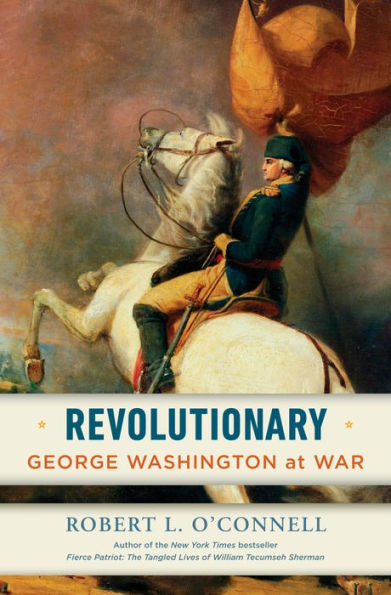Read an Excerpt
Chapter 1
The Gentrification of George
George Washington was born on February 22, 1732, a time when the great British colonization project of the North American continent was really taking off—at least in terms of population and space occupied, if not exactly in imperial profits. The Washingtons characterized that fecundity and, especially, land hunger.
They were fourth-generation transplants, solid but definitely lower-rung members of the gentry class that ran things in Virginia, and by extension across the British Empire. The original American Washington, John, came over in 1657, and was sufficiently land hungry to be remembered by nearby Indians as “Caunotocarious,” roughly translated as “devourer of Villages.”
GW’s father, Augustine, was similarly inclined, remembered for his relentless land speculation, love of farming, and reproductive success, siring nine offspring, including one amazing genetic bull’s-eye, George, the first son of his second wife, Mary Ball Washington.
There is no record of Augustine having had any inkling that he really nailed it with young George, or much of anything about their interaction. His plain favorite and the apparent star of the family was George’s half brother Lawrence, who was English educated, debonair, and soon to be a commissioned officer in the British Army. He must have seemed like a shimmering image of success to little GW, fourteen years his junior. And he was. For if it was George, not Lawrence, who was destined to prove the family’s rocket to the top, it was the older brother, not the father, who undeniably acted as the first stage.
In 1743, when he was eleven, everything changed for George Washington. In April, Augustine, apparently in good health, rode into a storm, sickened, and died, leaving Mary with six children to raise and a plantation, Ferry Farm, to run. The Washingtons were far from wealthy—their family assemblage of “plate” silver was worth only slightly more than £25. By all accounts, this flinty, determined woman rose to the challenge, managing the 276 acres of Ferry Farm and its attendant slaves with an iron hand.
By necessity, her oldest son, George, had to be part of the process, her right-hand man—at least in her eyes. As time passed, the responsibilities she placed on those slender but growing shoulders gradually evolved into a comprehensive plan for George’s future: manage Ferry Farm and take care of her. George Washington, homeboy: The concept was as ridiculous as it sounds. But she held fast to it, boycotting his wedding and refusing to acknowledge his accomplishments in the French and Indian War and the American Revolution on the firm grounds that his time would have been better spent in her service. For George, young or old, since he supported her for much of his life, Mary Washington emerges not as an idealized figure of Mom, but as a vindictive dependency, a quality to be avoided, especially in a mate.
On the other hand, Mary must have known her boy pretty well, or at least an early version of him. One reason she was so vociferous about his duties to her was likely an early recognition that he had no such intentions. What evidence there is indicates young George’s eyes and ambitions were already locked on to something far above and beyond her and Ferry Farm. And this was not just an adolescent fantasy. It was a real possibility.
There had been a stunning turn for the better in the fortunes of the Washington clan, and in particular Lawrence’s. When Britain and imperial rival Spain were drawn into conflict, today graphically remembered as the War of Jenkins’ Ear, Lawrence had secured one of eighty-eight blank king’s commissions and participated in the notoriously futile and disease-ridden siege of Cartagena, where malaria and yellow fever killed ten thousand of the fourteen thousand British. By the time the fiasco was called off in 1742, Lawrence had distinguished himself in a skirmish and had had the good fortune to command marines kept in ships offshore, largely away from contagion. He returned to Virginia more or less a war hero; he would name Mount Vernon, which he owned before George, after his admiral, maybe to celebrate his good luck. And it only got better. For single Lawrence promptly struck the matrimonial jackpot.
In July 1743, three months after Augustine’s death and just seven months after returning to Virginia, Lawrence married Anne Fairfax, daughter of Colonel William Fairfax, American agent for the vast Virginia land-grant acreage of Thomas Fairfax, the sixth Baron Fairfax of Cameron.
It amounted to a whole lot of Fairfax. Lawrence had wed his way into one of approximately two hundred families who made up the titled nobility who largely controlled Britain and its empire, and in this case several million acres of Virginia. Exactly why the Fairfaxes so rapidly embraced Lawrence, given his relatively modest pedigree, has never really been explained, but the marriage seems to have worked well enough, and it certainly launched him into the absolute upper reaches of the Old Dominion’s power structure. Meanwhile, he never forgot George.
He became, more or less, George’s surrogate father; more, in that he generously opened the Fairfax path to potential power and influence, and less, in that he never sent his promising half brother to school in England as he had been sent, or even to William and Mary for college locally. Instead, the plan for George was a solid, though somewhat intermittent, preliminary education, emphasizing useful skills with numbers, basic literacy, and, it appears, character development.



